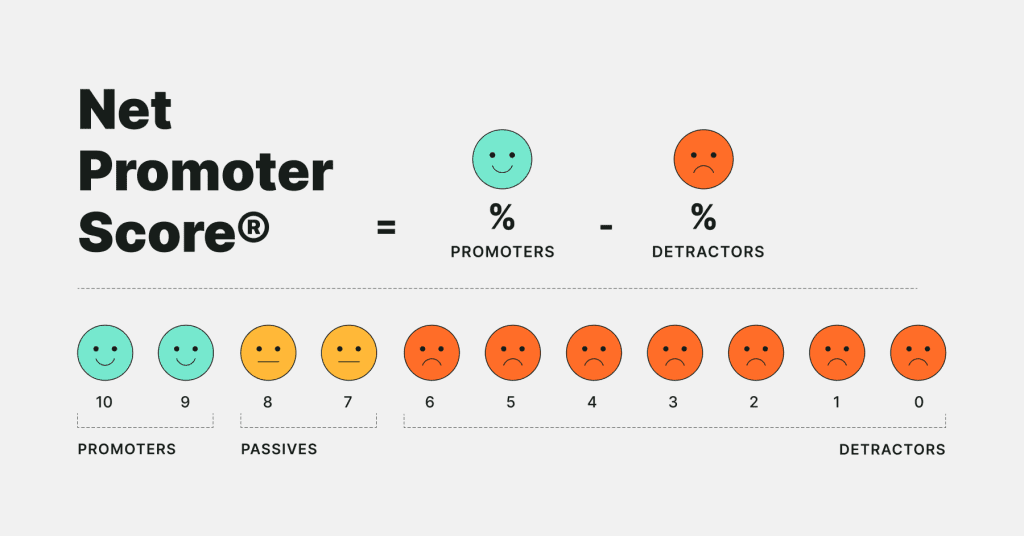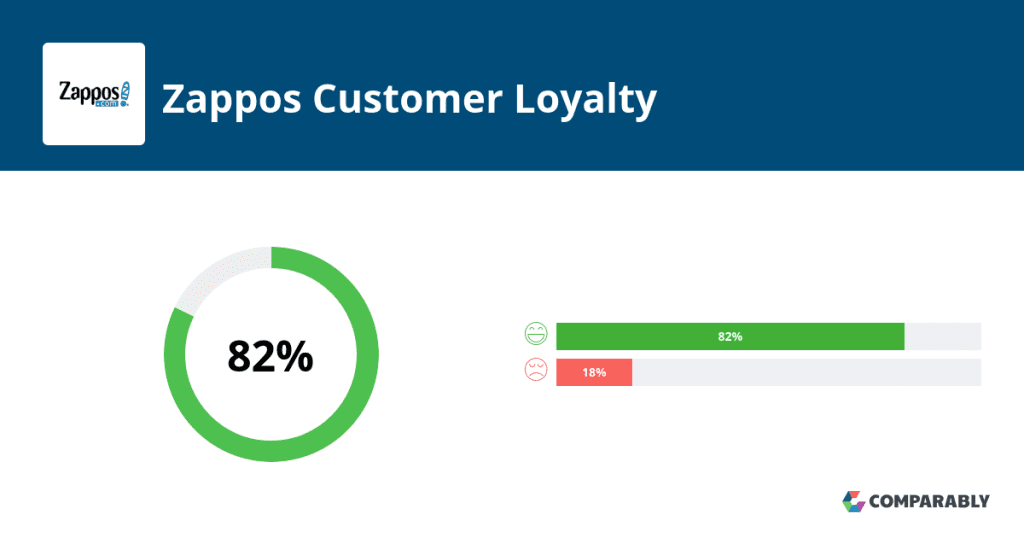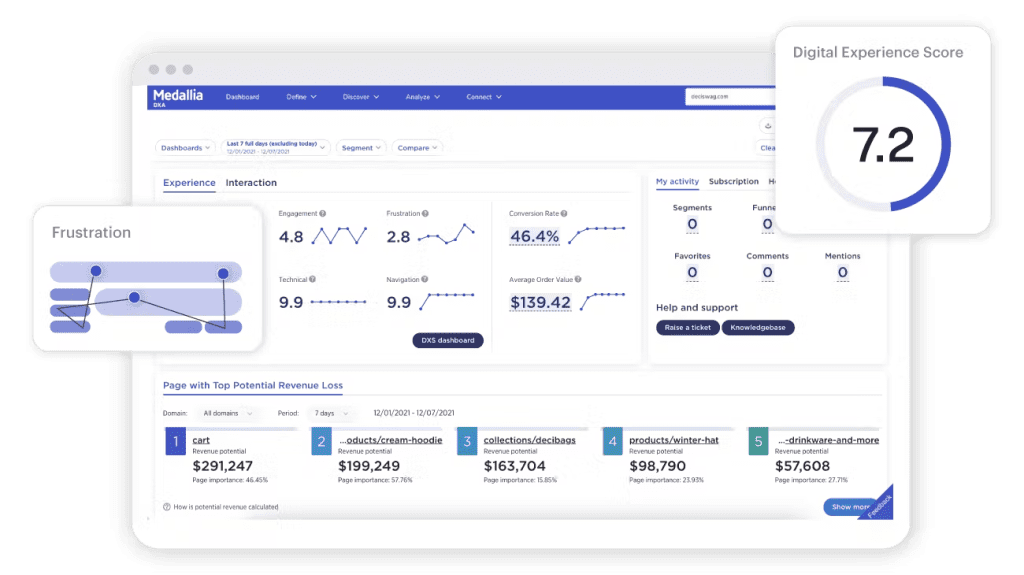Key Takeaways
- Unlock Business Growth: Discover how Net Promoter Score (NPS) serves as a key predictor of business success, correlating with growth and industry leadership.
- Strategic Measurement Techniques: Learn the mechanics of NPS, from understanding the scale to effective survey design, and integrate this dynamic metric into your business strategy.
- Customer Loyalty Mastery: Explore real-world examples and practical insights to master the art of understanding and nurturing customer loyalty through the strategic implementation of NPS.
In the dynamic landscape of modern business, where customer satisfaction reigns supreme, the Net Promoter Score (NPS) has emerged as a pivotal metric, offering profound insights into customer loyalty and business growth.

Understanding the Significance of NPS
As organizations increasingly recognize the pivotal role of fostering long-term customer relationships, understanding the intricacies of NPS becomes imperative.
This section will delve into the fundamental importance of NPS in the contemporary business environment.
Decoding the Essence of NPS
This blog aims to unravel the complexities surrounding NPS, presenting an in-depth exploration of its origins, functionality, and overarching impact on strategic decision-making.
Readers will gain insights into the essence of NPS as a transformative force in shaping business trajectories.
Navigating the NPS Scale
From decoding the nuances of the NPS scale to demystifying the art of distinguishing promoters from detractors, this section will guide readers through the intricacies of the metric.
Understanding the NPS scale is crucial for businesses aiming to gauge customer sentiment effectively.
Practical Aspects of NPS Calculation
Delving into the practical aspects, we will elucidate the step-by-step process of NPS calculation.
This segment equips readers with the knowledge to implement NPS surveys effectively, laying the foundation for insightful customer feedback.
Interpreting NPS Results
Beyond calculation, we will explore the art of interpreting NPS results.
This involves understanding the feedback obtained and deriving actionable insights that can drive positive changes within the organization.
Integration of NPS into Organizational Framework
This guide is not just a compass for understanding the ‘what’ and ‘why’ of Net Promoter Score but serves as a strategic playbook, empowering businesses to measure, optimize, and harness NPS for unparalleled success in the ever-evolving marketplace.
Join us as we unravel the layers of NPS intricacies, ensuring your business is well-equipped to navigate the realm of customer satisfaction and loyalty with finesse and acumen.
But, before we venture further, we like to share who we are and what we do.
About AppLabx
From developing a solid marketing plan to creating compelling content, optimizing for search engines, leveraging social media, and utilizing paid advertising, AppLabx offers a comprehensive suite of digital marketing services designed to drive growth and profitability for your business.
AppLabx is well known for helping companies and startups use digital marketing to drive web traffic to their websites and web apps.
At AppLabx, we understand that no two businesses are alike. That’s why we take a personalized approach to every project, working closely with our clients to understand their unique needs and goals, and developing customized strategies to help them achieve success.
If you need a digital consultation, then send in an inquiry here.
What is Net Promoter Score (NPS) and How to Measure It?
- Understanding Net Promoter Score (NPS)
- Benefits of Using Net Promoter Score
- How to Calculate Net Promoter Score
- Integrating NPS into Your Business Strategy
- Tools and Software for NPS Measurement
1. Understanding Net Promoter Score (NPS)

Introduction to NPS: A Metric for Customer Loyalty
In the intricate world of customer feedback metrics, Net Promoter Score (NPS) stands out as a key indicator of customer loyalty and satisfaction.
Originating from Fred Reichheld’s 2003 Harvard Business Review article, it has evolved into a globally recognized metric employed by businesses to gauge the likelihood of their customers recommending their products or services to others.
How NPS Works: The Mechanics Unveiled
NPS operates on a simple premise: customers are surveyed and categorized into three groups based on their likelihood to recommend—a scale of 0 to 10. Promoters (score 9-10), Passives (score 7-8), and Detractors (score 0-6).
The Net Promoter Score is then calculated by subtracting the percentage of Detractors from the percentage of Promoters.
The NPS Scale: Understanding Customer Sentiment
The NPS scale categorizes respondents into three distinct groups:
- Promoters (Scores 9-10): Loyal enthusiasts who are likely to promote your brand.
- Passives (Scores 7-8): Satisfied but unenthusiastic customers who may easily switch to competitors.
- Detractors (Scores 0-6): Unhappy customers who can damage your brand and hinder growth.
Example: Apple consistently boasts high NPS scores, indicating a large base of enthusiastic Promoters, contributing to its strong brand advocacy and customer loyalty.

Significance of NPS in Business Growth
Research indicates a strong correlation between the growth and Net Promoter Score.
In a study, the Net Promoter Score leaders outgrow their competitors in most industries—by an average of 2.5 times.
2. Benefits of Using Net Promoter Score

Identifying Promoters, Passives, and Detractors
One of the key benefits of implementing Net Promoter Score (NPS) is its ability to categorize customers into three distinct groups based on their likelihood to recommend.
This segmentation provides valuable insights into the customer sentiment spectrum:
- Promoters (Scores 9-10): Enthusiastic advocates who are likely to refer others and contribute to positive word-of-mouth.
- Passives (Scores 7-8): Satisfied customers, but not ardent enthusiasts. They are content but may not actively promote the brand.
- Detractors (Scores 0-6): Unhappy customers who may pose a risk to the brand through negative feedback and potential churn.
Driving Business Growth through NPS
Companies in various sectors, such as telecommunications and e-commerce, have witnessed substantial growth by maintaining NPS scores significantly above industry averages.
Enhancing Customer Retention and Loyalty
NPS serves as a powerful tool for gauging customer loyalty.
By identifying and cultivating Promoters, businesses can focus on retaining these valuable customers, who not only stay loyal themselves but also actively contribute to customer acquisition through positive referrals.
Example: Apple’s high NPS is reflective of its loyal customer base. Apple users often become brand advocates, leading to increased customer retention and a steady stream of new customers through recommendations.

Real-time Feedback for Continuous Improvement
One of the distinct advantages of NPS is its ability to provide real-time feedback.
By utilizing short and targeted surveys, businesses can capture customer sentiments immediately after a transaction or interaction.
This timely feedback enables companies to identify specific pain points or areas of excellence and make rapid adjustments to enhance overall customer experience.
Linking NPS to Operational Improvements
NPS goes beyond being a mere metric; it serves as a catalyst for organizational change.
By correlating NPS feedback with specific touchpoints in the customer journey, businesses can pinpoint areas that need improvement.
This linkage allows for targeted operational enhancements, ultimately leading to a more seamless and satisfactory customer experience.
Example: Following NPS feedback, a leading online retailer can identify website navigation challenges and implement user interface improvements, resulting in a notable increase in customer satisfaction scores.
Benchmarking Against Industry Standards
NPS provides businesses with a benchmark for evaluating their performance against industry standards.
By comparing NPS scores with competitors or industry averages, companies can gain valuable insights into their relative standing.
This benchmarking process enables organizations to set realistic improvement goals and stay competitive in their respective markets.
Fostering a Customer-Centric Culture
Implementing NPS encourages a customer-centric mindset within the organization.
By making customer feedback a central focus, employees at all levels become attuned to the importance of customer satisfaction.
This cultural shift can lead to improved communication, increased accountability, and a heightened commitment to meeting customer needs.
Example: Zappos, an online shoe and clothing retailer, ingrains a customer-centric culture by using NPS as a guiding metric. The company’s emphasis on customer satisfaction has resulted in industry-leading NPS scores and a reputation for exceptional customer service.

3. How to Calculate Net Promoter Score

NPS Survey Methodology: Crafting Effective Questions
The first step in calculating the Net Promoter Score is conducting a well-structured survey.
Craft concise and relevant questions that capture customer sentiment.
The primary question typically used is, “On a scale of 0 to 10, how likely are you to recommend our product/service to others?”
Determining the NPS Score: Categorizing Respondents
Once survey responses are collected, categorize respondents into three groups based on their scores:
- Promoters (Scores 9-10): Loyal enthusiasts are likely to recommend the brand.
- Passives (Scores 7-8): Satisfied customers but not actively promoting.
- Detractors (Scores 0-6): Unhappy customers who may negatively impact the brand.
Calculating NPS: The Formula Unveiled
The Net Promoter Score is derived by subtracting the percentage of Detractors from the percentage of Promoters. The formula is as follows:
NPS = %Promoters − %Detractors
This results in a score ranging from -100 to 100, with a higher score indicating a more positive NPS.
Interpreting NPS Results: Unveiling Customer Sentiments
Understanding the significance of your NPS score is crucial for making informed decisions.
Positive scores (above 0) indicate a higher number of Promoters, while negative scores suggest a higher percentage of Detractors.
The closer the score is to 100, the more promoters outweigh detractors.
4. Integrating NPS into Your Business Strategy

Using NPS to Drive Customer-Centric Improvements
NPS, as a dynamic metric, goes beyond mere measurement—it becomes a catalyst for customer-centric improvements within your business strategy.
Integrating NPS feedback into decision-making processes can lead to targeted enhancements in products, services, and overall customer experience.
Example: Apple, renowned for its customer loyalty, actively incorporates NPS insights to refine its product offerings. By analyzing feedback, Apple has continually adapted its products to meet customer expectations, contributing to its strong brand advocacy.

Incorporating NPS into Product/Service Development
NPS is a valuable tool for guiding product and service development, ensuring alignment with customer preferences.
By integrating NPS feedback into the development lifecycle, businesses can create offerings that resonate with their target audience.
Example: Microsoft utilized NPS to inform the development of its Windows operating system. By collecting and analyzing NPS data, Microsoft identified areas for improvement, resulting in user-friendly updates and increased customer satisfaction.
Aligning NPS with Overall Business Goals
For NPS to truly make an impact, it should align with broader business objectives. Integrating NPS into key performance indicators (KPIs) and strategic planning ensures that customer satisfaction becomes a core element of organizational success.
Encouraging a Customer-Centric Culture Through NPS
NPS can be a powerful tool for instilling a customer-centric culture within your organization.
By emphasizing the importance of NPS at all levels, from frontline staff to executives, businesses can foster an environment that prioritizes customer satisfaction.
Example: Zappos, the online retailer, exemplifies a customer-centric culture by integrating NPS into its daily operations. NPS scores influence employee bonuses, reinforcing a commitment to delivering exceptional customer service.

Driving Operational Excellence with NPS Insights
Operational improvements driven by NPS insights can significantly impact efficiency and customer satisfaction.
By identifying pain points in the customer journey, businesses can streamline processes and deliver a more seamless experience.
Utilizing NPS for Proactive Issue Resolution
NPS not only identifies areas for improvement but also serves as an early warning system for potential issues.
By addressing detractor feedback promptly, businesses can mitigate negative impacts and demonstrate a commitment to customer satisfaction.
Example: Airbnb employs NPS as a proactive tool for issue resolution. By monitoring NPS scores and addressing concerns raised by detractors, Airbnb has been able to enhance the overall guest experience.

Implementing NPS in Customer Service Strategies
Integrating NPS into customer service strategies ensures a real-time understanding of customer sentiment.
By utilizing NPS data, businesses can tailor customer service initiatives to address specific pain points and elevate the overall support experience.
5. Tools and Software for NPS Measurement
Selecting the right tools and software for Net Promoter Score (NPS) measurement is crucial for obtaining accurate and actionable insights. Numerous platforms offer features tailored to NPS surveys, providing a seamless experience for both businesses and respondents.

Choosing the Right NPS Survey Tool
When selecting an NPS survey tool, consider factors such as user-friendly interfaces, customization options, and analytics capabilities.
Tools like SurveyMonkey, Qualtrics, and Medallia are popular choices due to their robust features and flexibility.

Key Features to Look for in NPS Measurement Tools
To ensure an effective NPS measurement strategy, look for tools that encompass the following key features:
- Survey Customization: The ability to tailor surveys to your brand and industry-specific needs enhances the accuracy of NPS data.
- Real-time Analytics: Tools providing real-time analytics empower businesses to act promptly on NPS feedback, addressing concerns and capitalizing on positive sentiments.
- Integration Capabilities: Seamless integration with existing systems, such as CRM software, ensures a cohesive approach to customer data management.
Popular NPS Measurement Tools and Software
Several NPS measurement tools have gained prominence in the market, each offering unique features to cater to diverse business requirements.
- SurveyMonkey: Renowned for its user-friendly interface, SurveyMonkey enables businesses to design customized NPS surveys effortlessly. The platform’s analytics tools provide valuable insights for strategic decision-making.

- Qualtrics: A comprehensive experience management platform, Qualtrics, offers advanced NPS survey capabilities. Its features include sophisticated analytics and integration with CRM systems for a holistic view of customer sentiment.

- Medallia: Medallia specializes in customer experience management and provides powerful tools for NPS measurement. With a focus on actionable insights, Medallia helps businesses turn NPS feedback into strategic improvements.

The Impact of Advanced NPS Tools on Customer Satisfaction
Utilizing advanced NPS tools has a direct impact on customer satisfaction.
Addressing Challenges with Specialized NPS Software
Challenges such as survey fatigue and low response rates can be addressed by utilizing specialized NPS software.
These platforms often incorporate features like intelligent survey scheduling and personalized feedback mechanisms to enhance engagement.
Choosing NPS Software Aligned with Business Goals
Select NPS software that aligns with your business goals and industry-specific needs.
Solutions like Delighted, Wootric, and Promoter.io offer specialized features tailored to various sectors, providing targeted NPS measurement capabilities.
Conclusion
Understanding the Essence of NPS
In the labyrinth of modern business dynamics, the Net Promoter Score (NPS) emerges as a beacon, guiding organizations through the intricate terrain of customer satisfaction and loyalty.
From its conceptualization by Fred Reichheld in 2003 to its current status as a global metric, the journey through the understanding of NPS reveals a metric that transcends numerical values, offering profound insights into customer sentiments.
Decoding the NPS Scale and Its Mechanics
As we unravel the layers of the NPS scale and its mechanics, it becomes evident that NPS is more than a simple number—it’s a dynamic tool categorizing customers into promoters, passives, and detractors.
The scale serves as a compass, guiding businesses through the nuances of customer loyalty and advocacy.
Significance of NPS in Business Growth
Companies with industry-leading NPS scores consistently outpace their competitors, emphasizing the pivotal role NPS plays in predicting success in today’s competitive market.
Practical Aspects: Navigating NPS Implementation
Practical aspects of NPS implementation, from crafting effective survey questions to interpreting results, equip businesses with the knowledge to navigate the challenges associated with measuring NPS.
The journey involves not only understanding the ‘what’ and ‘why’ of NPS but also the ‘how’ of seamless implementation.
Innovations in NPS Measurement: Tools and Software
The exploration of tools and software for NPS measurement unveils a diverse array of options. Platforms like SurveyMonkey, Qualtrics, and Medallia, as well as specialized software like Delighted and Wootric, offer features that transform NPS feedback into actionable insights.
The impact of advanced tools on overall customer satisfaction is substantiated by statistical data, emphasizing the importance of technology in NPS implementation.
Strategic Integration of NPS into Business Operations
NPS doesn’t exist in isolation—it integrates seamlessly into the fabric of an organization’s strategy. From driving customer-centric improvements to aligning with broader business goals, NPS serves as a strategic compass.
By fostering a customer-centric culture and driving operational excellence, NPS becomes a catalyst for growth.
Mastering the Art of Customer Loyalty with NPS
In essence, Net Promoter Score is not just a metric; it is a strategic imperative, a north star guiding businesses toward sustained growth and heightened customer satisfaction.
The journey through NPS is a dynamic one, where understanding transforms into mastery—an evolution where NPS becomes more than a score; it becomes the art of understanding and nurturing customer loyalty in the competitive landscape of the customer-centric era.
As businesses continue to harness the power of NPS, they embark on a journey where NPS is not just measured but mastered, ensuring a trajectory of success in the ever-evolving realm of customer experience.
If you are looking for a top-class digital marketer, then book a free consultation slot here.
If you find this article useful, why not share it with your friends and business partners, and also leave a nice comment below?
We, at the AppLabx Research Team, strive to bring the latest and most meaningful data, guides, and statistics to your doorstep.
To get access to top-quality guides, click over to the AppLabx Blog.
People also ask
How is the Net Promoter Score NPS measured?
Net Promoter Score (NPS) is measured by asking customers a simple question: “On a scale of 0 to 10, how likely are you to recommend our product/service?” Respondents are categorized as Promoters (9-10), Passives (7-8), or Detractors (0-6). The NPS is calculated by subtracting the percentage of Detractors from the percentage of Promoters. The resulting score ranges from -100 to 100, with higher scores indicating stronger customer advocacy.
What is NPS and how do you calculate it?
Net Promoter Score (NPS) is a metric measuring customer loyalty. Calculated by asking, “On a scale of 0-10, how likely are you to recommend our product/service?” Scores classify respondents as Promoters (9-10), Passives (7-8), or Detractors (0-6). NPS is the percentage of Promoters minus Detractors, yielding a score between -100 and 100.
How do you analyze the Net Promoter Score?
Analyze the Net Promoter Score (NPS) by interpreting the score’s magnitude. Positive scores indicate more promoters than detractors, highlighting customer loyalty. Negative scores suggest improvement areas. Dive into qualitative feedback and identify patterns to make informed business decisions for enhanced customer satisfaction.



































